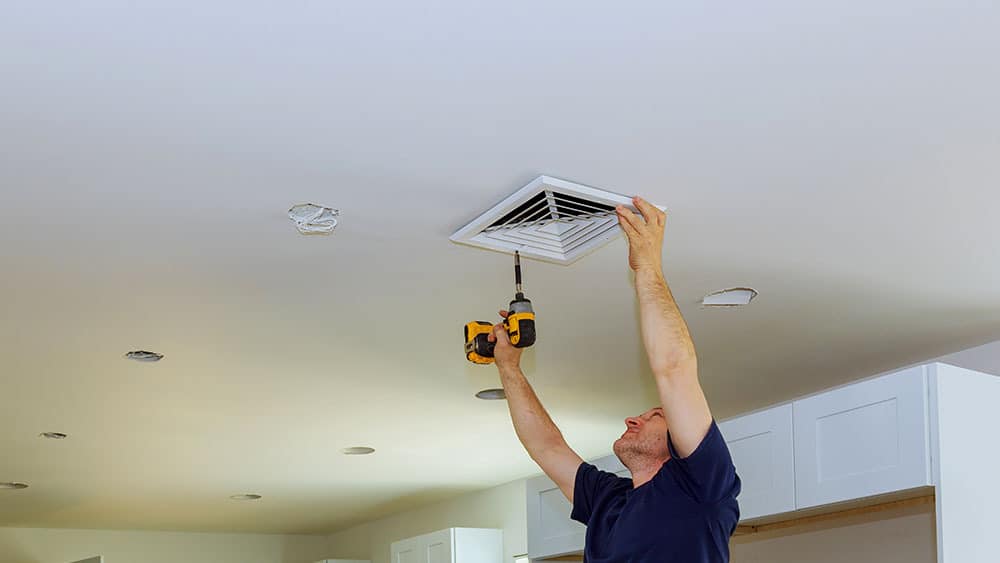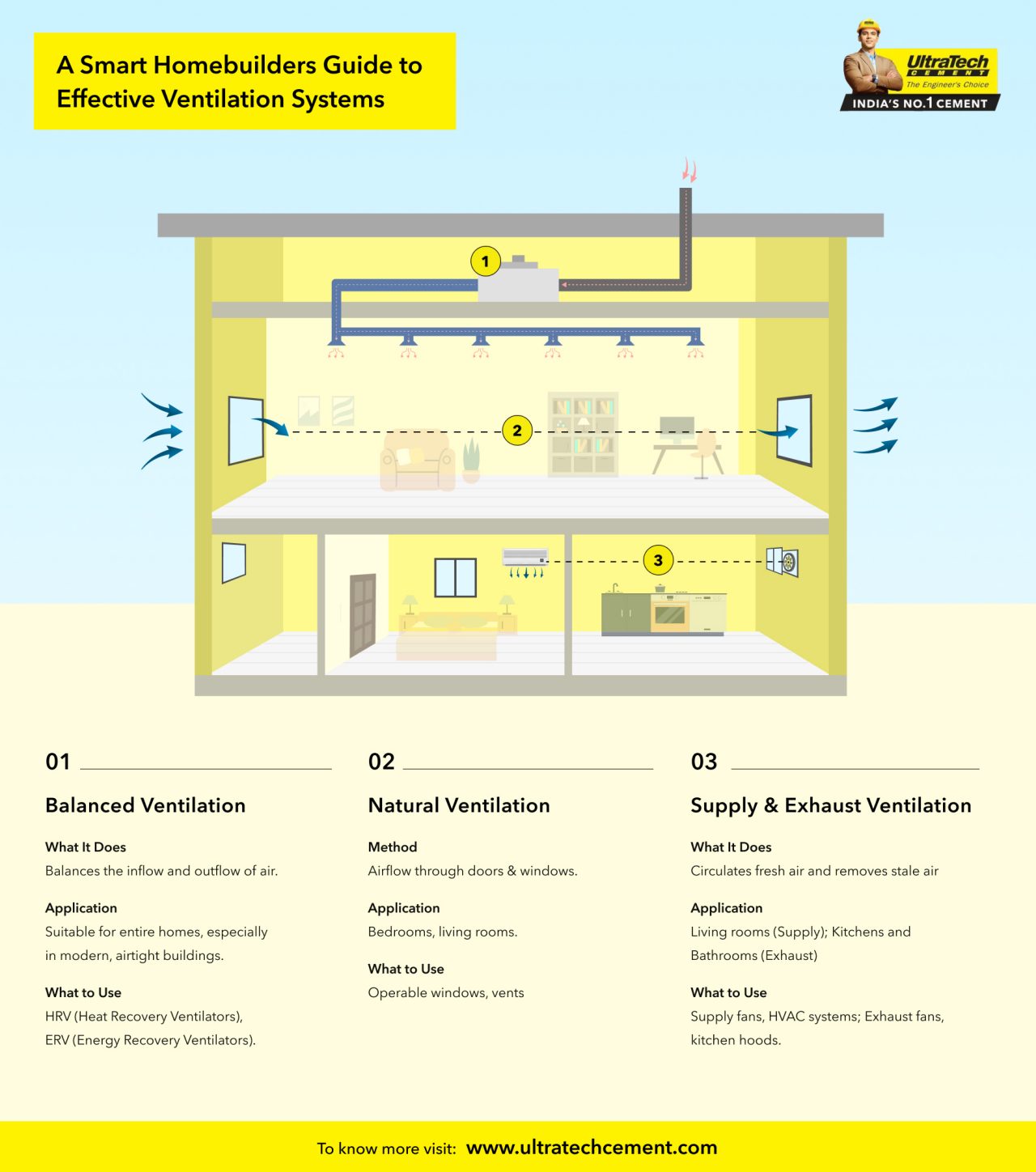Recognizing the Value of Home Ventilation for a Healthier Living Atmosphere
Home ventilation plays an important duty in keeping a healthy and balanced living atmosphere. It promotes the exchange of interior and exterior air, which is very important for enhancing air quality. Without proper ventilation, homes can end up being reproducing premises for contaminants and irritants. The consequences of poor air blood circulation can be significant. This brings up the query of exactly how house owners can efficiently execute ventilation techniques to protect their wellness and well-being. Comprehending these approaches is important.

The Fundamentals of Home Ventilation
Home air flow offers as a vital component of indoor air top quality and convenience. It involves the process of trading stale indoor air with fresh exterior air, consequently reducing humidity and controlling temperature level. Appropriate air flow systems can include natural approaches, such as open windows and vents, along with mechanical systems, such as exhaust fans and air exchangers. Effective home air flow helps stop problems like interior mold growth and the accumulation of hazardous bits. It likewise improves overall power performance, as well-ventilated areas can preserve comfortable temperatures with much less dependence on home heating and cooling down systems. Comprehending the fundamentals of home ventilation is vital for house owners looking for to develop a healthier living atmosphere on their own and their family members.

Usual Sources of Indoor Air Air Pollution

Although several may not understand it, interior air contamination can originate from different sources within a home. Usual contributors consist of unpredictable organic substances (VOCs) released from paints, solvents, and cleaning products. House devices, such as gas cooktops and fireplaces, can release harmful gases like carbon monoxide and nitrogen dioxide. Additionally, mold and mold flourish in damp areas, releasing spores that influence air high quality. Pet dog dander, allergen, and pollen can gather inside your home, further intensifying contamination degrees. Cigarette smoking inside creates toxic chemicals that stick around in the air. Building materials, consisting of asbestos and formaldehyde, can off-gas dangerous compounds. Acknowledging these resources is crucial for keeping a much healthier indoor setting and promoting efficient ventilation approaches.
Wellness Results of Poor Ventilation
Interior air contamination can have significant wellness implications, especially when air flow is poor. Poor ventilation can bring about the accumulation of hazardous pollutants, such as advice unstable natural compounds, mold, and particle issue. This accumulation might lead to respiratory issues, consisting of bronchial asthma, allergies, and chronic obstructive lung illness. People might experience signs like headaches, fatigue, and irritation of the eyes, nose, and throat. At risk populations, such as kids and the senior, go to greater risk for extreme wellness effects. Long-lasting exposure to poorly aerated environments can also add to a lot more severe conditions, consisting of heart diseases. As a result, making sure appropriate ventilation is essential for maintaining a healthy living environment and decreasing the threat of wellness problems linked with indoor air pollution.
Efficient Ventilation Approaches for Your Home
Correct air flow is important for keeping a healthy and balanced indoor environment, and carrying out effective techniques can significantly enhance air quality. Home owners can begin by making certain that exhaust fans are installed in bathrooms and kitchens to eliminate excess wetness and smells. Opening home windows regularly allows fresh air to flow, especially during mild weather condition. In addition, making use of air purifiers with HEPA filters can aid record air-borne toxins. For homes with home heating and cooling systems, preserving a/c systems and transforming filters on a regular basis is vital for peak efficiency. Integrating natural ventilation methods, such as cross-ventilation, can likewise boost air movement. Sealing any leakages in doors and home windows avoids undesirable drafts, which can interrupt regulated air movement, inevitably leading to boosted interior air high quality and convenience.
Keeping Optimum Air High Quality Year-Round
To preserve ideal air top quality year-round, house owners must take on a proactive strategy to handling their interior environment. On a regular basis keeping track of indoor air high quality is critical; this includes monitoring for toxins such as dirt, mold, and unpredictable natural substances (VOCs) Implementing effective air flow systems, such as exhaust fans and air cleansers, can considerably reduce airborne impurities. In addition, routine maintenance of HVAC systems warranties peak efficiency and air circulation. Homeowners need to additionally take into consideration moisture degrees, as extreme dampness can bring these details about mold development. Seasonal adjustments may necessitate changes in ventilation techniques to fit varying outside air high quality. By prioritizing these methods, homeowners can produce a healthier home, advertising general health for all owners throughout the year.
Frequently Asked Questions
How Can I Inform if My Home Demands Much Better Air Flow?
To establish if a home requires better air flow, one must observe indicators such as consistent humidity, mold and mildew growth, moldy odors, condensation on home windows, or enhanced allergy signs my link and symptoms, suggesting poor airflow and potentially inadequate indoor air quality.
What Are the Indicators of Poor Indoor Air Top Quality?

Can Houseplants Improve Indoor Air High Quality Properly?
The effectiveness of houseplants in boosting indoor air quality is questioned. While some studies suggest they can soak up toxic substances and create oxygen, their total effect may be very little contrasted to proper air flow and air filtering systems.
Just how Typically Should I Adjustment My Air Filters?
The regularity of air filter modifications typically depends on use and filter type. Generally, it is advised to change filters every three months, though homes with allergies or pets might require more regular changes for optimal performance.
Are There Any Type Of Specific Air Flow Equipments for Allergic Reaction Sufferers?
Numerous air flow systems, such as HEPA-filtered units, properly decrease irritants in the air. Home Ventilation Melbourne. These systems catch animal, plant pollen, and dirt dander, offering allergic reaction patients with a cleaner, healthier indoor atmosphere while taking care of air top quality efficiently
It facilitates the exchange of interior and outdoor air, which is important for enhancing air top quality. Home air flow offers as an essential component of indoor air top quality and convenience. It involves the process of exchanging stale interior air with fresh outdoor air, consequently lowering humidity and managing temperature level. Indoor air pollution can have substantial health and wellness implications, specifically when ventilation is insufficient. Appropriate ventilation is vital for maintaining a healthy and balanced indoor environment, and executing reliable approaches can significantly improve air high quality.